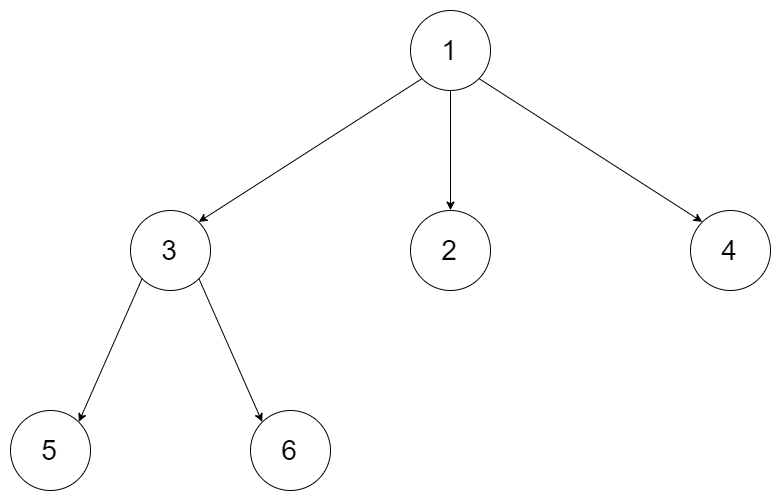

二叉树的最大深度
描述
尽管之前你可能做过这道题目,但只要认真看完,相信你会收获满满!可以一起解决如下两道题目:
- 104.二叉树的最大深度
- 559.n叉树的最大深度
104.二叉树的最大深度
题目地址:https://leetcode-cn.com/problems/maximum-depth-of-binary-tree/
给定一个二叉树,找出其最大深度。
二叉树的深度为根节点到最远叶子节点的最长路径上的节点数。
说明: 叶子节点是指没有子节点的节点。
示例:给定二叉树 [3,9,20,null,null,15,7],

返回它的最大深度 3 。
递归法
本题可以使用前序(中左右),也可以使用后序遍历(左右中),使用前序求的就是深度,使用后序求的是高度。
而根节点的高度就是二叉树的最大深度,所以本题中我们通过后序求的根节点高度来求的二叉树最大深度。
这一点其实是很多同学没有想清楚的,很多题解同样没有讲清楚。
我先用后序遍历(左右中)来计算树的高度。
- 确定递归函数的参数和返回值:参数就是传入树的根节点,返回就返回这棵树的深度,所以返回值为int类型。
代码如下:
int getdepth(treenode* node)
- 确定终止条件:如果为空节点的话,就返回0,表示高度为0。
代码如下:
if (node == null) return 0;
- 确定单层递归的逻辑:先求它的左子树的深度,再求的右子树的深度,最后取左右深度最大的数值 再+1 (加1是因为算上当前中间节点)就是目前节点为根节点的树的深度。
代码如下:
int leftdepth = getdepth(node->left); // 左
int rightdepth = getdepth(node->right); // 右
int depth = 1 + max(leftdepth, rightdepth); // 中
return depth;
所以整体c++代码如下:
class solution {
public:
int getdepth(treenode* node) {
if (node == null) return 0;
int leftdepth = getdepth(node->left); // 左
int rightdepth = getdepth(node->right); // 右
int depth = 1 + max(leftdepth, rightdepth); // 中
return depth;
}
int maxdepth(treenode* root) {
return getdepth(root);
}
};
代码精简之后c++代码如下:
class solution {
public:
int maxdepth(treenode* root) {
if (root == null) return 0;
return 1 + max(maxdepth(root->left), maxdepth(root->right));
}
};
精简之后的代码根本看不出是哪种遍历方式,也看不出递归三部曲的步骤,所以如果对二叉树的操作还不熟练,尽量不要直接照着精简代码来学。
本题当然也可以使用前序,代码如下:(充分表现出求深度回溯的过程)
class solution {
public:
int result;
void getdepth(treenode* node, int depth) {
result = depth > result ? depth : result; // 中
if (node->left == null && node->right == null) return ;
if (node->left) { // 左
depth++; // 深度+1
getdepth(node->left, depth);
depth--; // 回溯,深度-1
}
if (node->right) { // 右
depth++; // 深度+1
getdepth(node->right, depth);
depth--; // 回溯,深度-1
}
return ;
}
int maxdepth(treenode* root) {
result = 0;
if (root == 0) return result;
getdepth(root, 1);
return result;
}
};
可以看出使用了前序(中左右)的遍历顺序,这才是真正求深度的逻辑!
注意以上代码是为了把细节体现出来,简化一下代码如下:
class solution {
public:
int result;
void getdepth(treenode* node, int depth) {
result = depth > result ? depth : result; // 中
if (node->left == null && node->right == null) return ;
if (node->left) { // 左
getdepth(node->left, depth + 1);
}
if (node->right) { // 右
getdepth(node->right, depth + 1);
}
return ;
}
int maxdepth(treenode* root) {
result = 0;
if (root == 0) return result;
getdepth(root, 1);
return result;
}
};
迭代法
使用迭代法的话,使用层序遍历是最为合适的,因为最大的深度就是二叉树的层数,和层序遍历的方式极其吻合。
在二叉树中,一层一层的来遍历二叉树,记录一下遍历的层数就是二叉树的深度,如图所示:

所以这道题的迭代法就是一道模板题,可以使用二叉树层序遍历的模板来解决的。
如果对层序遍历还不清楚的话,可以看这篇:二叉树:层序遍历登场!
c++代码如下:
class solution {
public:
int maxdepth(treenode* root) {
if (root == null) return 0;
int depth = 0;
queue que;
que.push(root);
while(!que.empty()) {
int size = que.size();
depth++; // 记录深度
for (int i = 0; i < size; i++) {
treenode* node = que.front();
que.pop();
if (node->left) que.push(node->left);
if (node->right) que.push(node->right);
}
}
return depth;
}
};
那么我们可以顺便解决一下n叉树的最大深度问题
559.n叉树的最大深度
题目地址:https://leetcode-cn.com/problems/maximum-depth-of-n-ary-tree/
给定一个 n 叉树,找到其最大深度。
最大深度是指从根节点到最远叶子节点的最长路径上的节点总数。
例如,给定一个 3叉树 :

我们应返回其最大深度,3。
思路:
依然可以提供递归法和迭代法,来解决这个问题,思路是和二叉树思路一样的,直接给出代码如下:
递归法
c++代码:
class solution {
public:
int maxdepth(node* root) {
if (root == 0) return 0;
int depth = 0;
for (int i = 0; i < root->children.size(); i++) {
depth = max (depth, maxdepth(root->children[i]));
}
return depth + 1;
}
};
迭代法
依然是层序遍历,代码如下:
class solution {
public:
int maxdepth(node* root) {
queue que;
if (root != null) que.push(root);
int depth = 0;
while (!que.empty()) {
int size = que.size();
depth++; // 记录深度
for (int i = 0; i < size; i++) {
node* node = que.front();
que.pop();
for (int j = 0; j < node->children.size(); j++) {
if (node->children[j]) que.push(node->children[j]);
}
}
}
return depth;
}
};
其他语言版本
java
104.二叉树的最大深度
class solution {
/**
* 递归法
*/
public int maxdepth(treenode root) {
if (root == null) {
return 0;
}
int leftdepth = maxdepth(root.left);
int rightdepth = maxdepth(root.right);
return math.max(leftdepth, rightdepth) + 1;
}
}
class solution {
/**
* 迭代法,使用层序遍历
*/
public int maxdepth(treenode root) {
if(root == null) {
return 0;
}
deque deque = new linkedlist<>();
deque.offer(root);
int depth = 0;
while (!deque.isempty()) {
int size = deque.size();
depth++;
for (int i = 0; i < size; i++) {
treenode poll = deque.poll();
if (poll.left != null) {
deque.offer(poll.left);
}
if (poll.right != null) {
deque.offer(poll.right);
}
}
}
return depth;
}
}
python
104.二叉树的最大深度
递归法:
class solution:
def maxdepth(self, root: treenode) -> int:
return self.getdepth(root)
def getdepth(self, node):
if not node:
return 0
leftdepth = self.getdepth(node.left) #左
rightdepth = self.getdepth(node.right) #右
depth = 1 + max(leftdepth, rightdepth) #中
return depth
递归法:精简代码
class solution:
def maxdepth(self, root: treenode) -> int:
if not root:
return 0
return 1 + max(self.maxdepth(root.left), self.maxdepth(root.right))
迭代法:
import collections
class solution:
def maxdepth(self, root: treenode) -> int:
if not root:
return 0
depth = 0 #记录深度
queue = collections.deque()
queue.append(root)
while queue:
size = len(queue)
depth += 1
for i in range(size):
node = queue.popleft()
if node.left:
queue.append(node.left)
if node.right:
queue.append(node.right)
return depth
559.n叉树的最大深度
递归法:
class solution:
def maxdepth(self, root: 'node') -> int:
if not root:
return 0
depth = 0
for i in range(len(root.children)):
depth = max(depth, self.maxdepth(root.children[i]))
return depth + 1
迭代法:
import collections
class solution:
def maxdepth(self, root: 'node') -> int:
queue = collections.deque()
if root:
queue.append(root)
depth = 0 #记录深度
while queue:
size = len(queue)
depth += 1
for i in range(size):
node = queue.popleft()
for j in range(len(node.children)):
if node.children[j]:
queue.append(node.children[j])
return depth
使用栈来模拟后序遍历依然可以
class solution:
def maxdepth(self, root: 'node') -> int:
st = []
if root:
st.append(root)
depth = 0
result = 0
while st:
node = st.pop()
if node != none:
st.append(node) #中
st.append(none)
depth += 1
for i in range(len(node.children)): #处理孩子
if node.children[i]:
st.append(node.children[i])
else:
node = st.pop()
depth -= 1
result = max(result, depth)
return result
审核编辑 :李倩
-
解析LeetCode第226号题目:反转二叉树2023-02-17 1389
-
二叉树的代码实现2023-01-18 1712
-
C++构建并复制二叉树2023-01-10 1526
-
使用C语言代码实现平衡二叉树2022-09-21 1696
-
怎么就能构造成二叉树呢?2022-07-14 2130
-
C语言数据结构:什么是二叉树?2022-04-21 4301
-
二叉树的前序遍历非递归实现2021-05-28 2405
-
二叉树操作的相关知识和代码详解2020-12-12 2470
-
C语言二叉树代码免费下载2019-08-27 818
-
详解电源二叉树到底是什么2019-06-06 11184
-
二叉树,一种基础的数据结构类型2019-04-13 4975
-
二叉树层次遍历算法的验证2017-11-28 2337
-
计算机二级二叉树的问题2012-09-04 4230
-
基于二叉树的时序电路测试序列设计2012-07-12 1000
全部0条评论

快来发表一下你的评论吧 !

